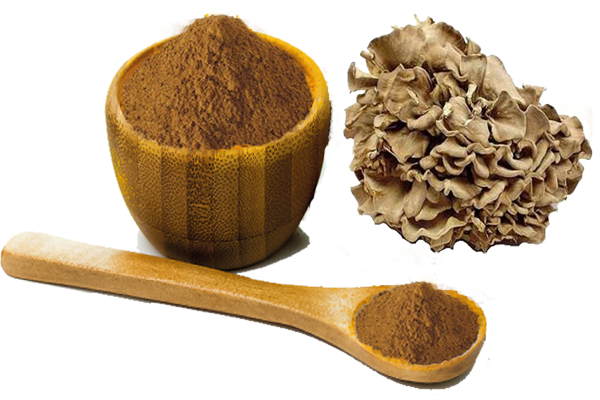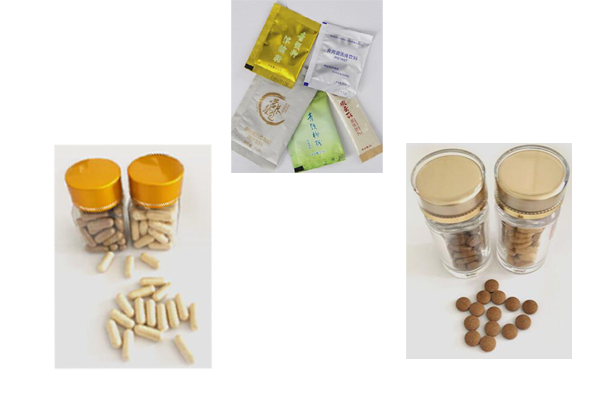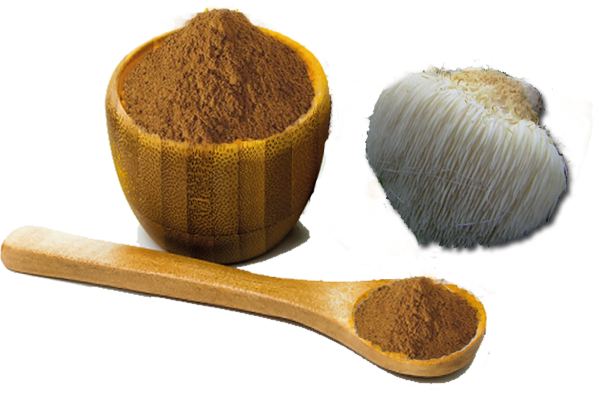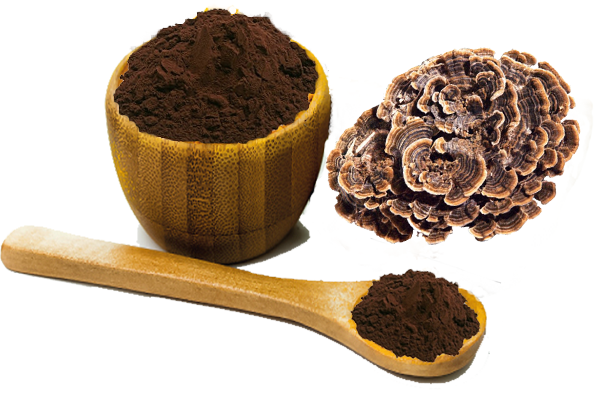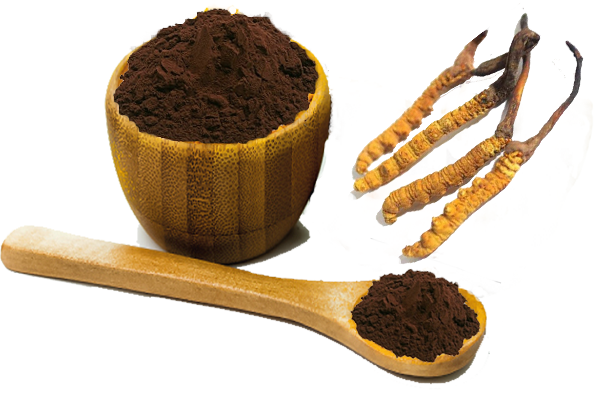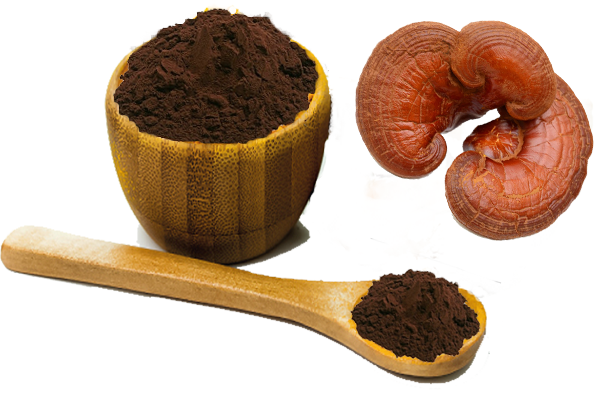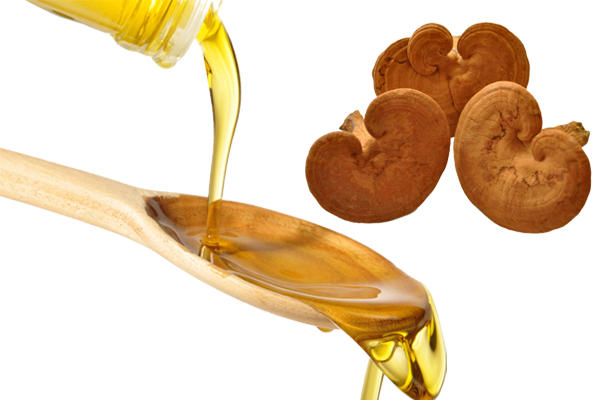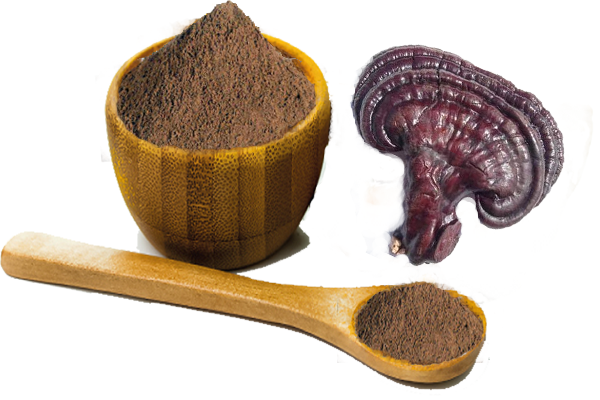
Grifola Frondosa Extract
MIGU supplied Grifola Frondosa Extract polysaccharide 10%,20%,30%,40%,50%; refined powder and OEM service with analysis meets the EP, USP, JP, CP....
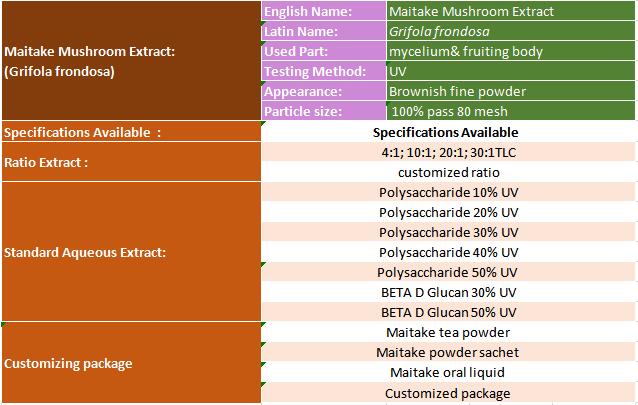
grifola frondosa extract specification
Grifola Frondosa Extract (Maitake Mushroom) History:
Maitake mushroom (Grifola frondosa )is an edible fungus. It has a large fruiting body and overlapping caps. Maitake is increasingly being recognized as a potent source of polysaccharide compounds with dramatic health-promoting potential. Some extracts have shown particular promise as immunomodulating agents, and as an adjunct to cancer and HIV therapy. They may also provide some benefit in the treatment of hyperlipidemia, hypertension, and hepatitis. Synonyms include beta-glucan, cloud mushroom, dancing mushroom, grifolan, Grifon Pro Maitake D Fraction Extract,king of mushroom, Maitake Gold , MD-fraction, MDF, My-take.
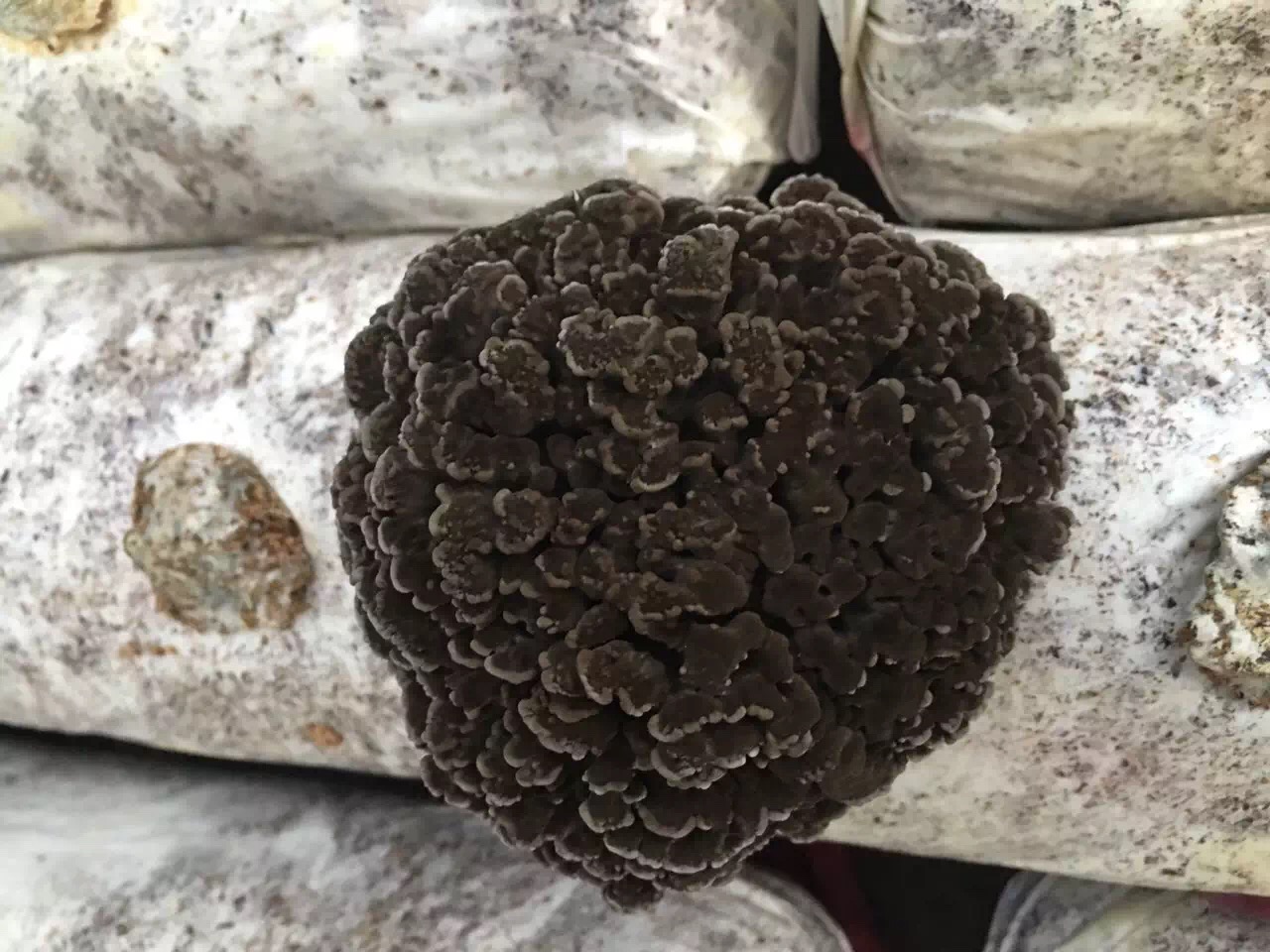
grifola frondosa extract planting base
Traditionally, maitake mushroom has been used as a food and a herbal remedy. Early studies in the laboratory as well as in humans suggest that beta-glucan extracts from maitake mushroom may benefit cancers. In animal studies, maitake mushroom extracts are reported to have the benefits of blood sugar level lowering. Animal and laboratory studies suggest that beta-glucan extracts from maitake mushroom may alter the immune system.
Basic Information of Grifola Frondosa Extract (Maitake Mushroom Extract):
Maitake is rich in minerals (such as potassium, calcium, and magnesium), various vitamins (B2, D2 and niacin), fibers and amino acids. One active constituent in Maitake for enhancing the immune activity was identified in the late 1980s as a protein-bound beta-glucan compound.The main active ingredient of Polysaccharides.components in glucan is given priority to, with beta – (1-6) branch of beta – (1 – > 3) glucan as the basic structure, containing a small amount of mannose and xylose.
Scientific study shows the extract of this highly prized edible mushroom may have potential benefits for cholesterol and blood sugar levels, immune function and cancer treatment and prevention.
Maitake (Grifola frondosa ) Mushroom Origin –Wild and Cultivated
Maitake (Grifola frondosa) is a wood rotting fungi which required wood flour as the mainly mateiral. Our maitake planted base material are taking Chestnut tree–Fagaceae wood chips of species to get high quality & nutritional of maitake. Surely we will add some fillers like Bran, rice bran, corn flour to increase the nitrogen content to supply the fruit body nutrition! In order to get high getting material ratio ,we contral the temperature around 15—20℃
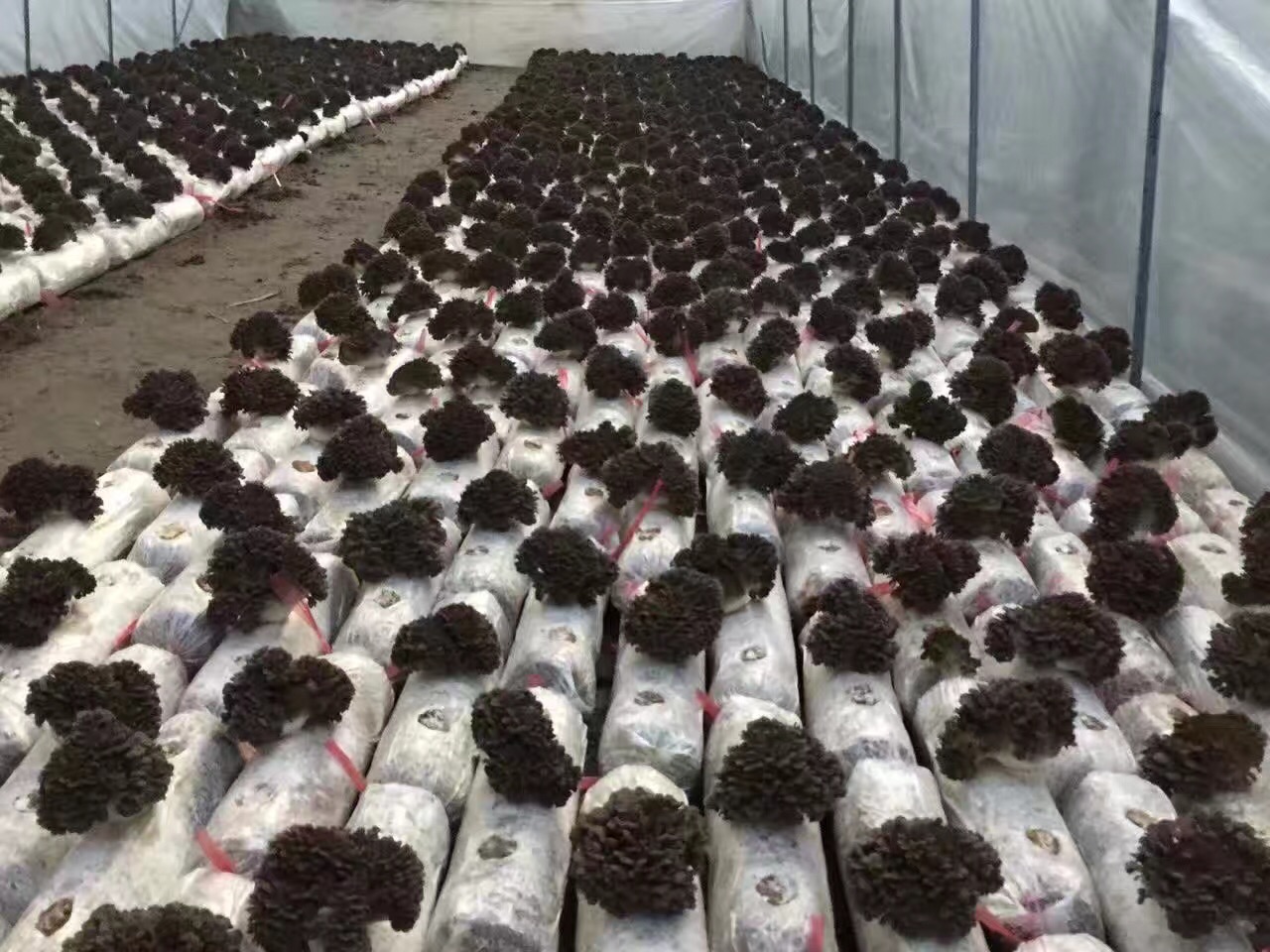
grifola frondosa extract planting base
Maitake ‘s getting is very important which decided we can get high quality and good weight of the fruit body, when the growth of white side disappear from fruit body lid of maitake , then we can pick it, if not we will meet the white lid began to bend down which grown the spore which means its ripe over and will influence the quality of fruit body.
Potential Health Benefits of Maitake Mushroom Extracts
Maitake polysaccharides have the function of anti-cancer, anti-hypertension, depress blood sugar, anti-fat, anti-hepatitis, according to some America professional hospital prove, during chemotherapy, use maitake polysaccharides to restrain cancer cell will be better than only use chemotherapy. Japanese professor use maitake polysaccharides to anti cancer, the experiment prove than maitake can restrain 86.5%, 32% higher than shiitake polysaccharides.America national cancer institute proved in 1992 than maitake extract have the function of anti-AIDS.
A: Cholesterol
Preliminary evidence shows that maitake may help lower cholesterol levels, notes CoxHealth Medical Center. A study on laboratory animals published in the October 2011 issue of the “Journal of Agriculture and Food Chemistry” found that four weeks of supplementation with maitake mushroom extract lowered liver cholesterol levels. Researchers concluded that maitake exerted its effects at the genetic level by increasing activity of genes in the liver that promote lipid transport. By contrast, Hypsizigus marmoreus, or beech mushroom, another mushroom tested in the study, did not show cholesterol-lowering effects.
B: Blood Sugar
Maitake may help manage blood sugar levels and prevent diabetes, according to a study published in the April 2007 issue of the “Journal of Pharmacy and Pharmacology.” A polysaccharide molecule in maitake, called MT-alpha-glucan, decreased fasting blood sugar and insulin levels and increased levels of glycogen, a short-term storage form of glucose, in the liver. Maitake also increased the ability of insulin to bind to liver cells and improved pancreatic function. Researchers concluded that maitake may be useful for prevention and management of diabetes by decreasing insulin resistance.
C: Immune Function
Immune benefits of maitake extract include modulation of cytokines, molecules produced by white blood cells that activate the immune response, according to the University of Wisconsin Botany Department. Maitake exerts its effects by binding to the cell membranes of white blood cells known as macrophages and either activating or inhibiting release of cytokines. A study published in the Summer 2004 issue of the “Journal of Medicinal Food” found that D-fraction, a polysaccharide extract of maitake, activated several types of immune cells and molecules, including T-helper cells, macrophages and interleukins. Researchers concluded that maitake may offer immune benefits that help protect against infection.
D: Cancer
Maitake D-fraction may inhibit cancer development and spread and also make chemotherapy drugs more effective, according to Dr. Shari Lieberman, author of the book “Maitake Mushroom and D-Fraction.” A study published in the June 2011 issue of the “Journal of Medicinal Food” found that maitake D-fraction promotes apoptosis — programmed cell death — in breast cancer cells. Maitake extract interfered with energy production in cancer cells, a discovery which, researchers note, will help scientists target potential cancer prevention and treatment approaches.
Early studies in the laboratory as well as in humans suggest that beta-glucan extracts from maitake may increase the body’s ability to fight cancer.
A 1997 study published in the Annals of the New York Academy of Science found that maitake D-fraction was able to enhance the immune system and inhibit the spread of tumors in mice implanted with breast cancer. In a 1995 report published in the same journal, researchers concluded that maitake D-fraction was able to activate the immune systems of mice that had been injected with liver cancer cells. The extract seemed to prevent the spread of tumors to the liver and prevent the development of cancer in normal cells.
Clinical studies
In a study of cancer patients without anticancer drugs, maitake D-Fraction hindered metastatic progress, lessened the expression of tumor markers, and increased NK cell activity in all patients.
In another study, researchers supplied 22- to 57-year-old cancer patients in stages II-IV with a combination of maitake MD-fraction and whole maitake powder. They observed cancer regression or significant symptom improvement in 58.3 percent of liver cancer patients, 68.8 percent of breast cancer patients, and 62.5 percent of lung cancer patients.
However, the trial found a less than 10-20 percent improvement for leukemia, stomach cancer, and brain cancer
patients. Furthermore, when maitake product or extract was taken in addition to chemotherapy,immune-competent cell activities were enhanced 1.2-1.4 times, compared with chemotherapy alone.Thus, it is believed that certain maitake extracts may benefit people at risk of certain cancers. An article written by a group of researchers at The University of Texas at Houston even just to have Maitake mushrooms in the list of leading supplements for cancer care.
Grifola Frondosa Extract Side Effects
Maitake Mushroom has been used as food for many years, probably it is safe for healthy subjects at low dosages. Maitake side effects are unclear, when it is taken as medicine or at high doses. Intake of maitake mushroom may lead tohypotension and hypoglycemia. Caution is advised for diabetic patients and those are taking drugs, herbs, or supplements that affect blood sugar or blood pressure. Side effects such as allergy or even arthritis may occur.
How to use Grifola Frondosa Extract Polysaccharide?
Disease-prevention doses of commercial preparations range from 12 to 25 mg of the extract and 200 to 250 mg or 500 to 2,500 mg of whole powder daily. A trial among HIV-positive patients used doses of 6 g/day whole powder or 20 mg purified extract with 4 g whole maitake powder.
References:
[1] Finkelstein MP, et al, Chemosensitization of carmustine with maitake beta-glucan on
androgen-independent prostatic cancer cells: involvement of glyoxalase I.J Altern Complement Med. 2002 Oct;8(5):573-80. [2] Kodama N, et al, Effects of D-Fraction, a polysaccharide from Grifola frondosa on tumor growth involve activation of NK cells.Biol Pharm Bull. 2002 Dec;25(12):1647-50. [19] Kodama N, et al, Can maitake MD-fraction aid cancer patients? Altern Med Rev. 2002 Jun;7(3):236-9.[18] Kodama N, et al, Effect of Maitake (Grifola frondosa) D-Fraction on the activation of NK cells in cancer patients.J Med Food. 2003 Winter;6(4):371-7.
[3] Kubo K, et al, The effect of maitake mushrooms on liver and serum lipids. Altern Ther Health Med. 1996 Sep;2(5):62-6.[21] Kubo K, et
al, Anti-hyperliposis effect of maitake fruit body (Grifola frondosa). I.Biol Pharm Bull. 1997 Jul;20(7):781-5.
[4] Fukushima M, et al, Cholesterol-lowering effects of maitake (Grifola frondosa) fiber, shiitake (Lentinus edodes) fiber, and enokitake (Flammulina velutipes) fiber in rats.Exp Biol Med (Maywood). 2001 Sep;226(8):758-65.
[5] Talpur N, et al, Effects of Maitake mushroom fractions on blood
pressure of Zucker fatty rats.Res Commun Mol Pathol Pharmacol. 2002;112(1-4):68-82.
[6] Talpur N, et al, Effects of niacin-bound chromium, Maitake mushroom fraction SX and (-)-hydroxycitric acid on the metabolic syndrome in aged diabetic Zucker fatty rats.Mol Cell Biochem. 2003 Oct;252(1-2):369-77.
[7]Sanzen I, et al,Nitric oxide-mediated antitumor activity induced by the extract from Grifola frondosa
(Maitake mushroom) in a macrophage cell line, RAW264.7. J Exp Clin Cancer Res. 2001 Dec;20(4):591-7. [26] Manohar V, et al, Effects of a water-soluble extract of maitake mushroom on circulating glucose/insulin concentrations in KK mice.Diabetes Obes Metab. 2002 Jan;4(1):43-8. [27] Horio H, Ohtsuru M.Maitake (Grifola frondosa) improve glucose tolerance of experimental diabetic rats.J Nutr Sci Vitaminol (Tokyo). 2001 Feb;47(1):57-63.
[8] Kubo K, et al, Anti-diabetic activity present in the fruit body of Grifola frondosa (Maitake). I.Biol Pharm Bull. 1994 Aug;17(8):1106-10.
[9] Kabir Y, et al, Dietary mushrooms reduce blood pressure in spontaneously hypertensive rats (SHR).J Nutr Sci Vitaminol (Tokyo). 1989 Feb;35(1):91-4.

